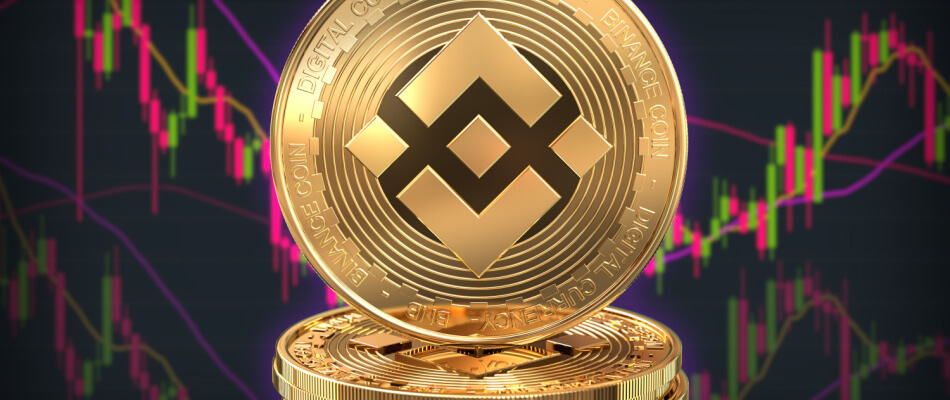Binance Coin, what is it?
Binance Coin (BNB) is a cryptocurrency that was created by the very popular exchange Binance. However, this is not the end of the story. Because what is the practical application of Binance Coin and how does this digital currency work under the hood? Read all about it in the article below.
Binance Coin Launch
Binance Coin was launched in 2017. This went through the route of an initial coin offering (ICO). An ICO is a type of fundraising. Initially, the BNB token was issued as an ERC20 token. This means that the token ran on the Ethereum network and met the requirements of the ERC20 standard. During the ICO, 100 million BNB tokens were issued. This is half of the total supply.
Binance Coin has now chosen to decouple from the Ethereum network. BNB is now running on a proprietary blockchain . This blockchain is called Binance Chain.
Binance Coin is ranked fourth on the list of the largest cryptocurrencies by market capitalization. It is just slightly smaller than Cardano.
Practical Application of Binace Coin
Initially, Binance Coin was launched as a utility token for the Binance exchange. BNB tokens were good for a trading discount within the exchange. You could use the tokens to trade at lower rates. Binance exchange stimulated the purchase of BNB tokens. This trading discount was only valid for the first four years after the launch of Binance. It was halved every year.
Today, however, the practical applications of Binance Coin are much broader. For example, you can use the BNB token not only within the Binance ecosystem, but also on various webshops. For example, it is possible to use your BNB tokens to purchase airline tickets, gift cards and online services. Of course, it is also possible to use the token to realize the purchase of other tokens.
It is important to realize that cryptocurrencies are still in their infancy. It is therefore conceivable that BNB tokens will have many more applications in the future. It is noticeable over the years that more and more (large) companies allow payments with cryptocurrencies.
BNB token burn
The maximum supply of BNB tokens is 200 million. However, this number decreases every three months. The Binance Coin team burns a certain amount of BNB tokens every three months. The number of tokens depends on the profit made. 20% of the profit made is used to purchase BNB tokens to then ‘burn’ them. Burning tokens is practically nothing more than destroying them. Tokens that have been burned can never be bought, sold or used again.
The burning of BNB tokens will stop when the maximum supply of 200 million tokens is halved. In total, there will be 100 million tokens left. But what is the relevance of this? Why would you create tokens and then periodically destroy them? This has everything to do with creating an (artificial) scarcity. By burning tokens, the difference between supply and demand is manually played with. The supply is reduced, so that the price per token will increase.

Binance Coin Benefits
The Binance Coin (BNB) is one of the largest digital currencies of the moment and has a number of advantages. Below are some of them discussed.
Lightning-fast transactions
Binance has developed a so-called matching engine that is capable of supporting 1.4 million orders per second. This means that in practice it will not take long for your transaction to be paired and executed. Binance’s matching engine is so powerful that it is patented. As a buyer of BNB tokens, you will reap the benefits of this.
Major player in the market
Binance is one of the biggest players in crypto land. If it were a fundamentally unreliable party, this would have come to light long ago. Also when it comes to security, you seem to be in good hands with Binance and the associated Binance Coin. Various integrated security measures ensure a safe trading experience.
Means of payment
The BNB token can be used as a means of payment. That is to say, you can use it to pay in various places. The possibilities seem to be expanding every day. For example, you can now not only buy gift cards with BNB tokens, but also meals or plane tickets.
Redeemable via Binance
When you have Binance Coins in your possession, you will be able to exchange them for other cryptocurrencies via the Binance platform. This exchange qualifies as one of the largest exchanges in the world with an extremely large offer.
Participating in ICOs
New cryptocurrencies are launched regularly. Some of these launches go through Binance Launchpad. On this platform you can use your BNB tokens to invest in ICOs. Keep in mind that not all new cryptocurrencies survive. There are therefore risks associated with investing in ICOs.
Can Binance Coin be used anonymously?
No, Binance Coin is barely usable anonymously. This has to do with the fact that this cryptocurrency is closely linked to the Binance exchange. This is an exchange where you need an account to trade. In addition, you must verify your identity extensively. This has a lot to do with stricter regulations for cryptocurrency exchanges. This prevents shady business such as money laundering. If you are looking for cryptocurrencies that do guarantee a high degree of privacy, you will have to think more in the direction of Monero, Zcash, Verge or DASH.
Buy Binance Coin
Are you interested in buying the Binance coin but wondering how to buy it? Use the widget below, via this widget you can buy the Binance coin at Bitvavo, one of the largest crypto exchanges in the Netherlands.
Compare brokers and start investing in cryptocurrency
Are you excited about investing in cryptocurrency after reading this article? Compare brokers and find the broker that suits you best!